Abstract
1. In turtle cones the steady-state relation between the internal potential and log light intensity was much flatter in the steady state than it was at 30 msec after the beginning of a step of light; this is attributed to a desensitization which develops with a delay of 50-100 msec.
2. When a weak flash was superposed on a steady background light which hyperpolarized the cone by 3-6 mV the amplitude of the linear response to a flash was reduced to 1/e and the time to maximum was shortened from about 110 to 70 msec; the response also became diphasic. With stronger background lights the flash sensitivity continued to fall, but the time to maximum did not become shorter than 40-50 msec and lengthened again with very strong lights.
3. In cones the flash sensitivity SF was reduced to half its dark value SFD by a light intensity of 1/SFDζ where ζ is about 20 sec/V.
4. At low levels of background light, about two-thirds of the change in sensitivity was time-dependent and one-third was attributable to the `instantaneous non-linearity' described in the previous paper.
5. The reduction in time to peak and the decrease in sensitivity produced by a background light which hyperpolarized by about 3 mV was little affected by changing the diameter of the area illuminated from 12 to 800 μm.
6. An experiment with a rod showed that a very weak light which hyperpolarized by only 0·5 mV decreased the linear response to 1/e and shortened the time to maximum from 300 to 180 msec.
7. With weak or moderate flashes the time-dependent desensitization lagged behind the potential by 50-100 msec.
8. The desensitization and shortening of time scale which persisted after a flash or step were associated with an after-hyperpolarization. The relaxation of potential, sensitivity and time scale became slower as the preceding illumination was increased from 103 to 1010 photons μm-2; the increase seemed to occur in steps involving components which relaxed with time constants of the order of 0·1, 1, 10 and 100 sec. A rebound phenomenon was observed after steps longer than 30 sec and with equivalent intensities greater than 105 photons μm-2 sec-1.
9. Several of the observations are explained by a hypothesis in which the central assumption is that the particles which block the ionic channels are degraded or removed by an autocatalytic reaction.
Full text
PDF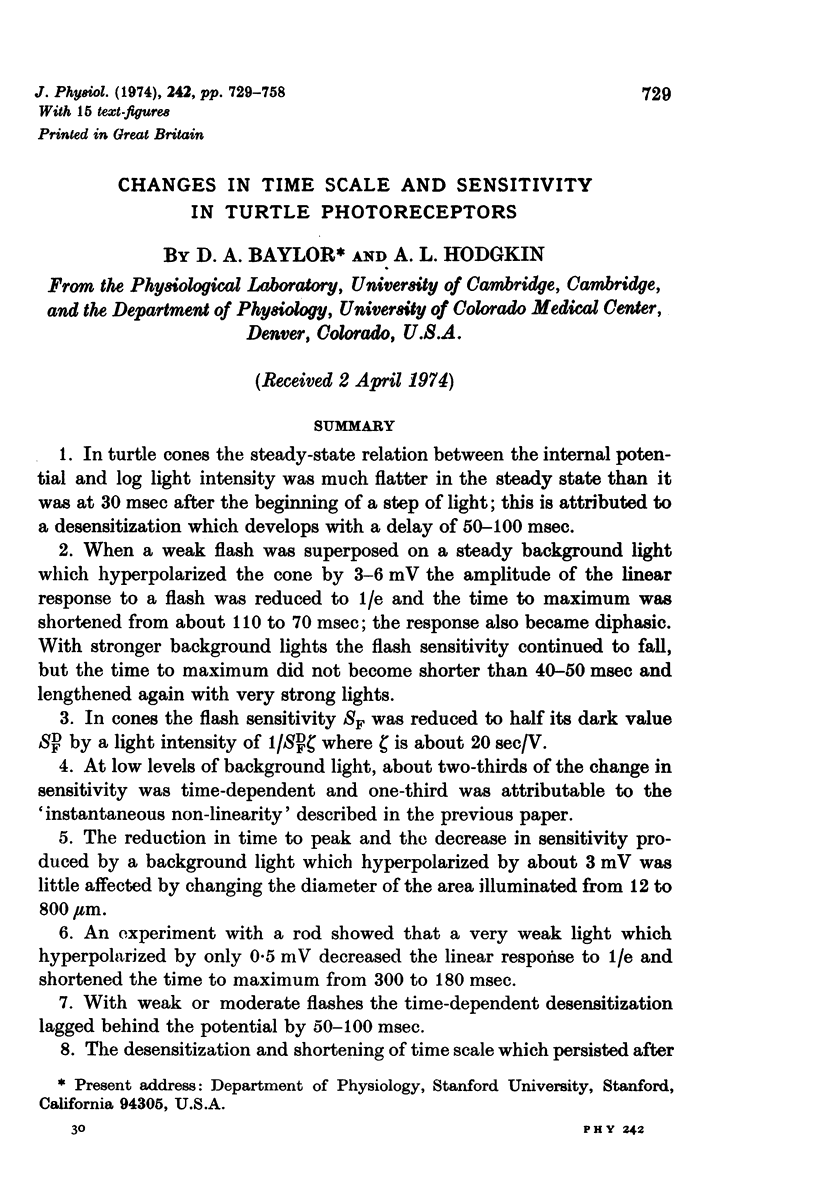
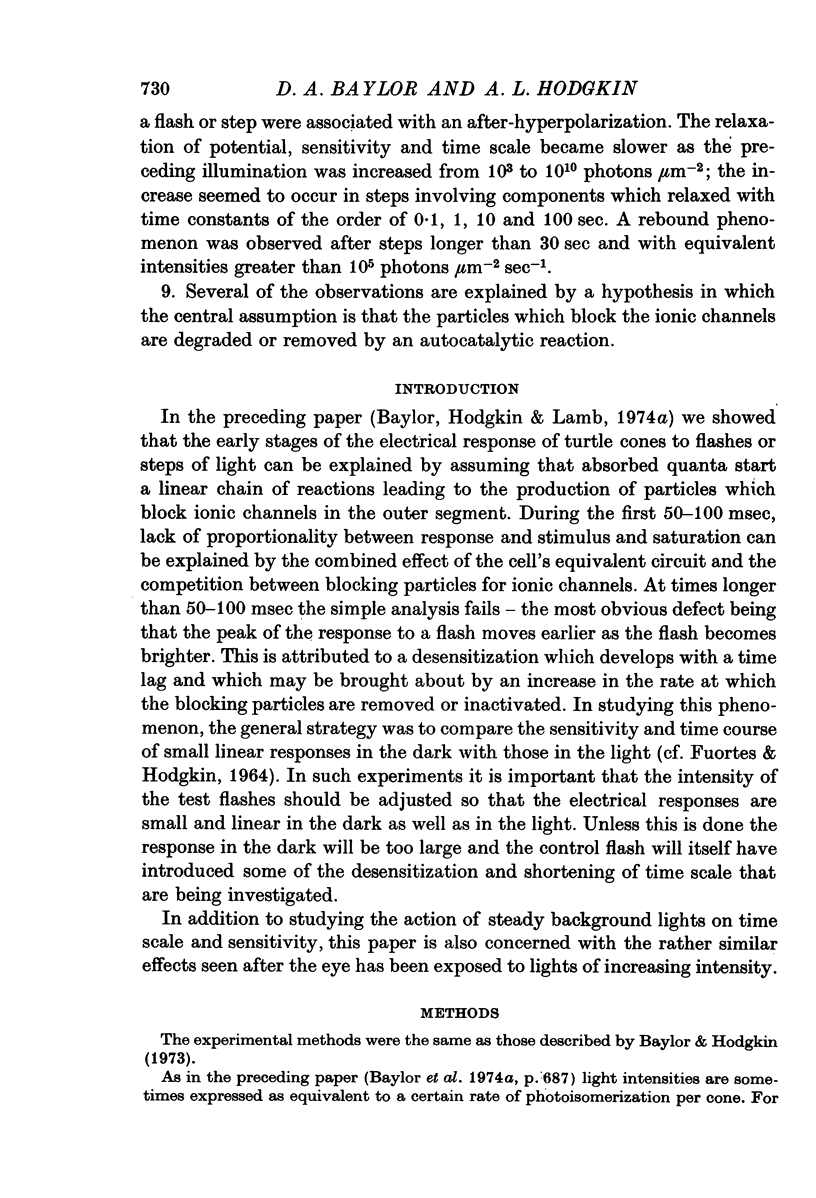
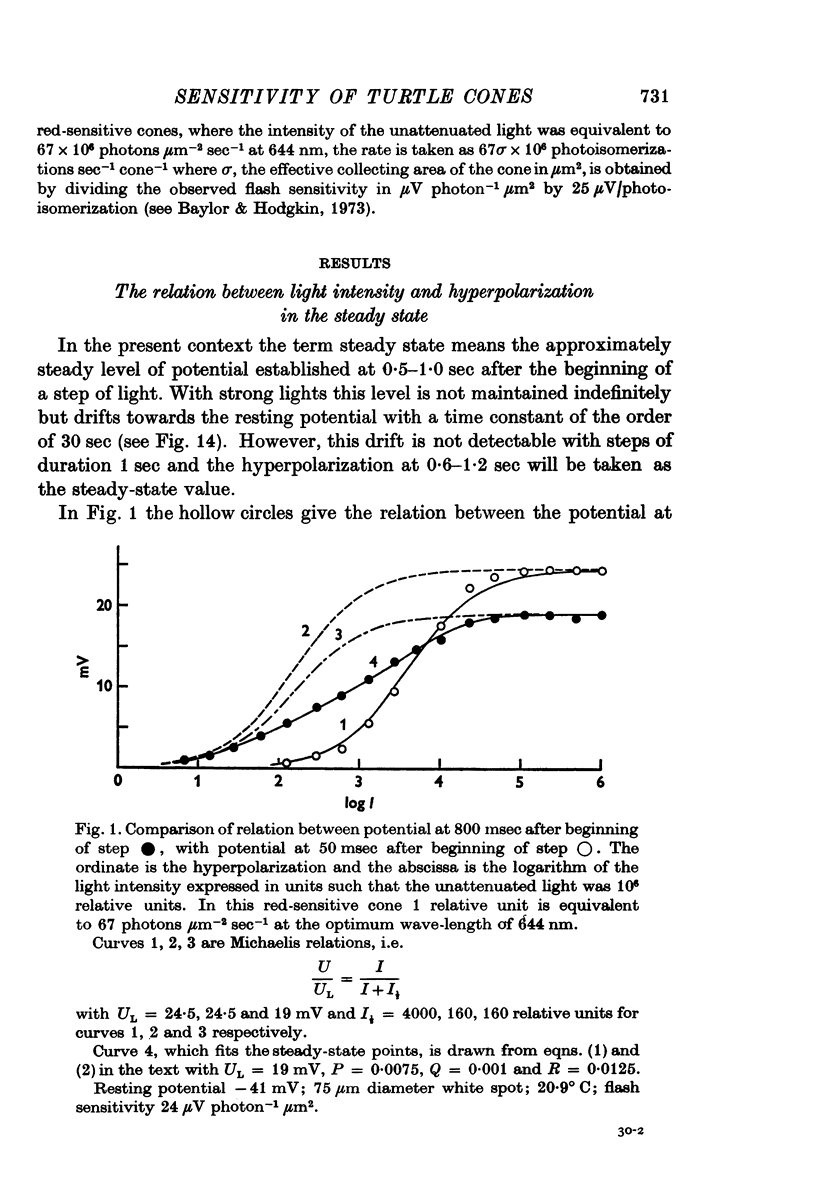
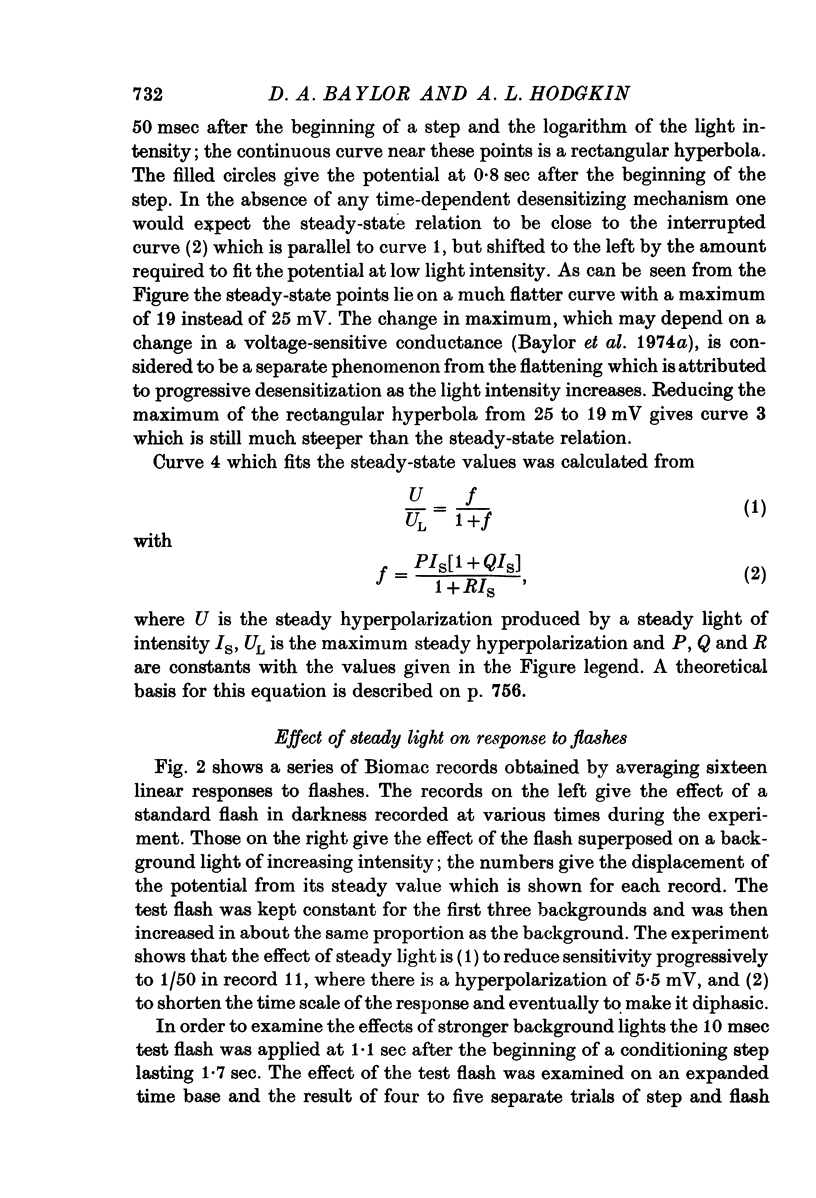
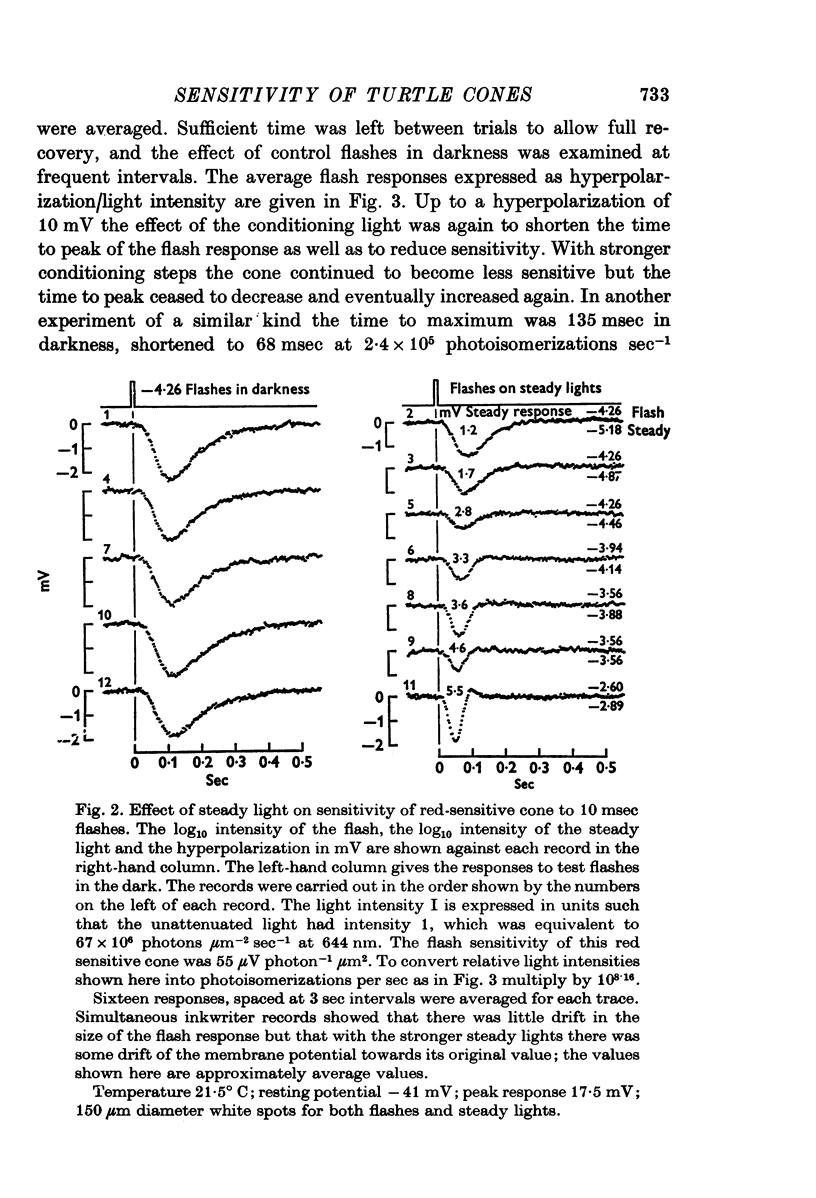
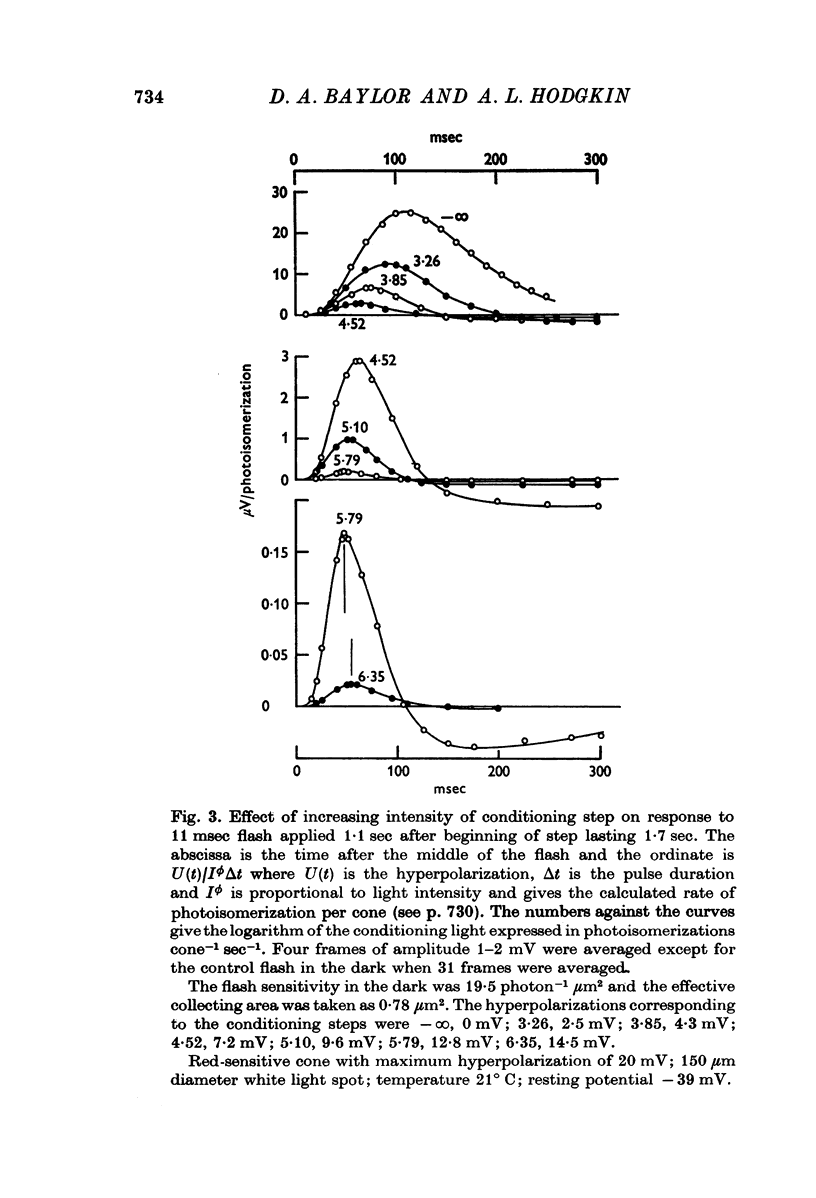
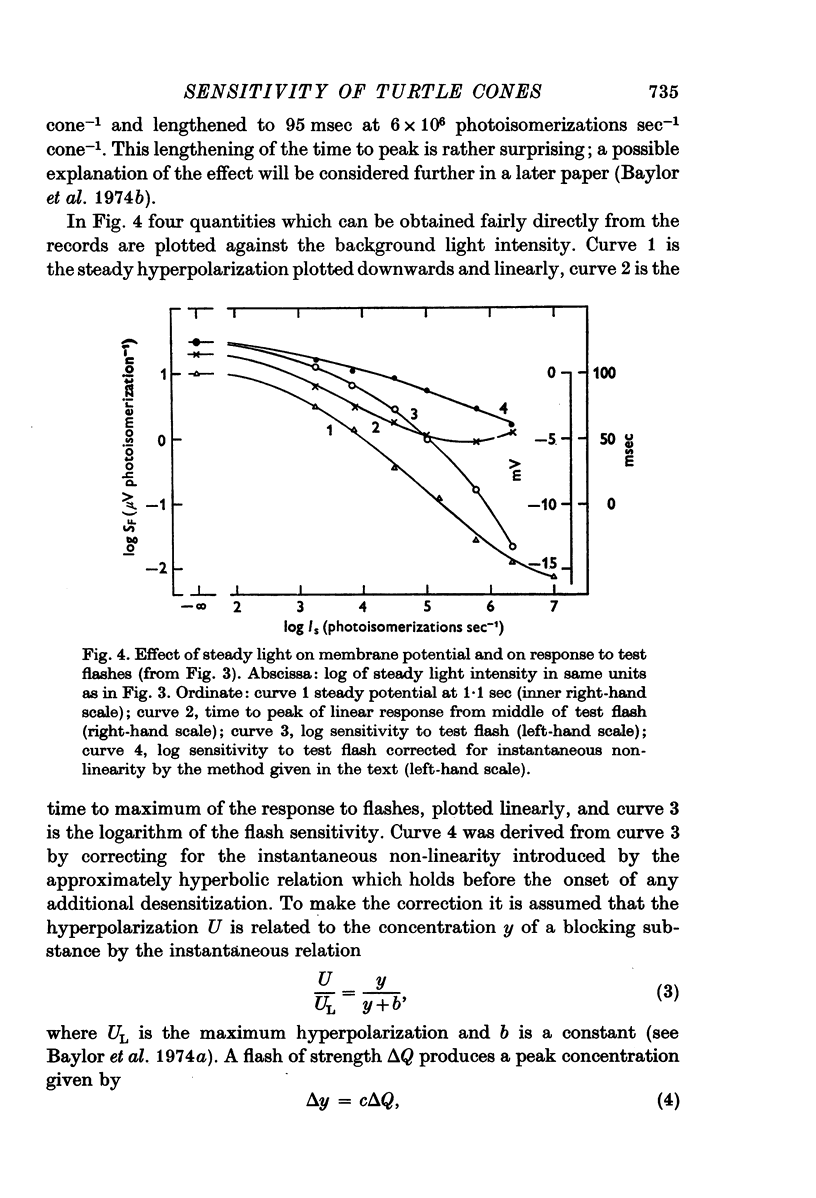
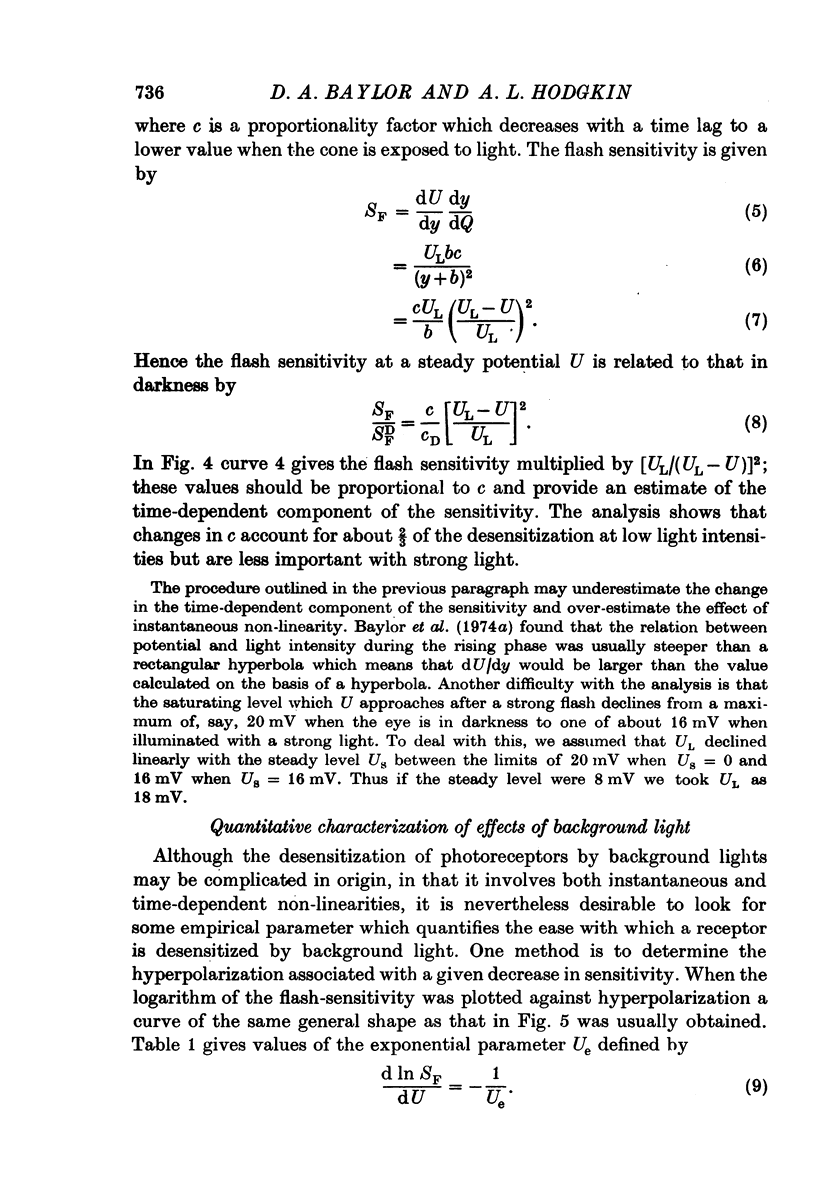
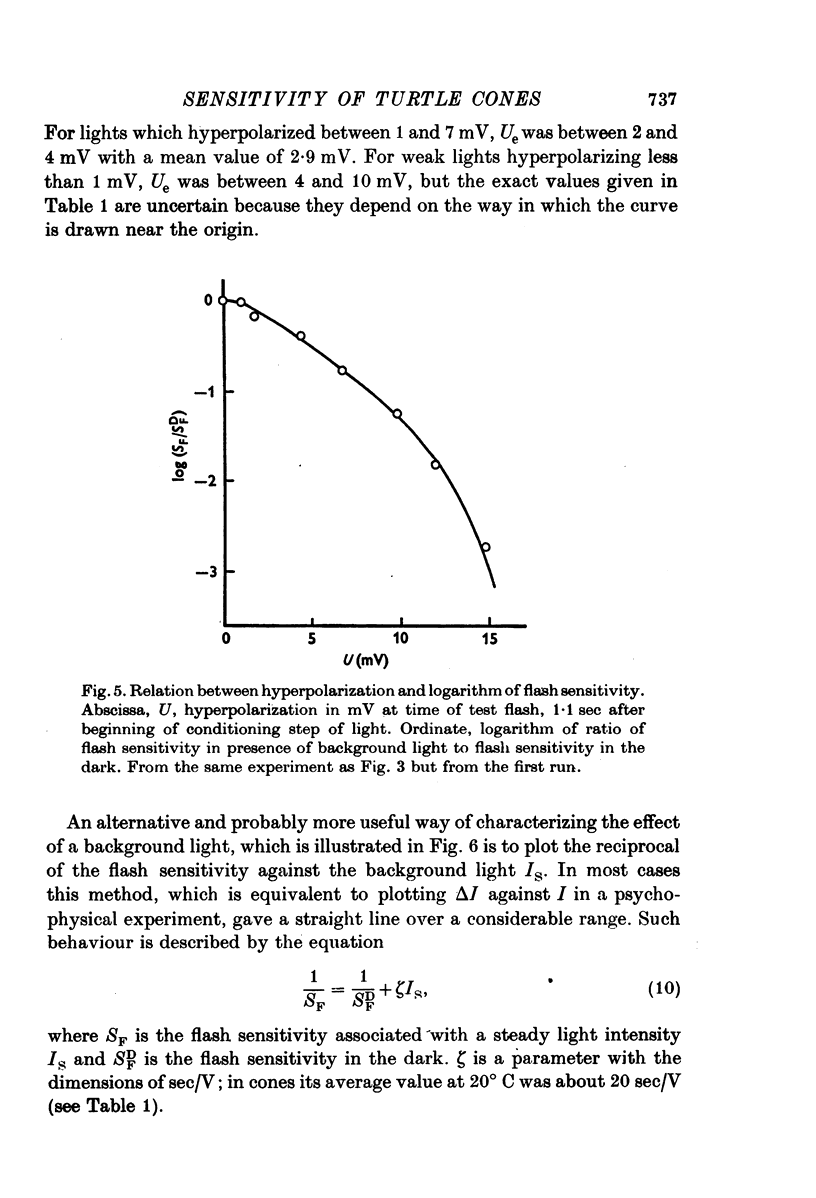
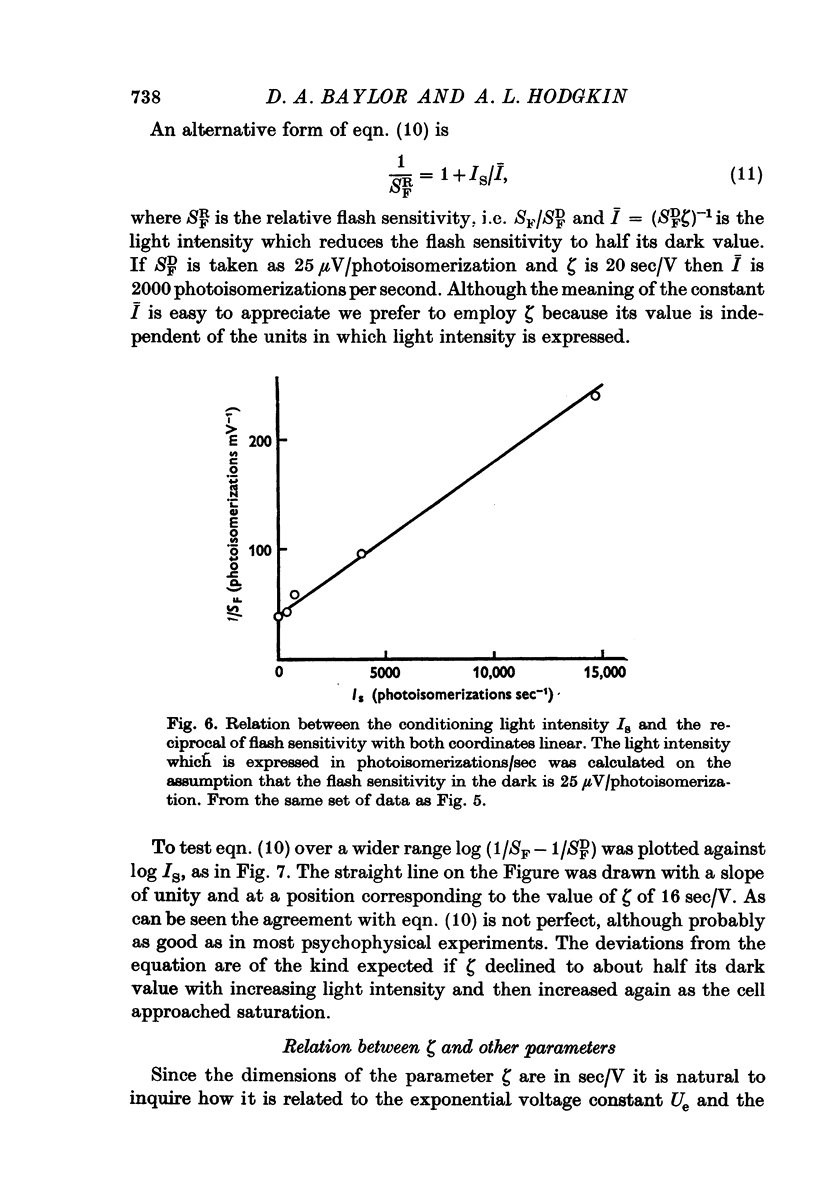
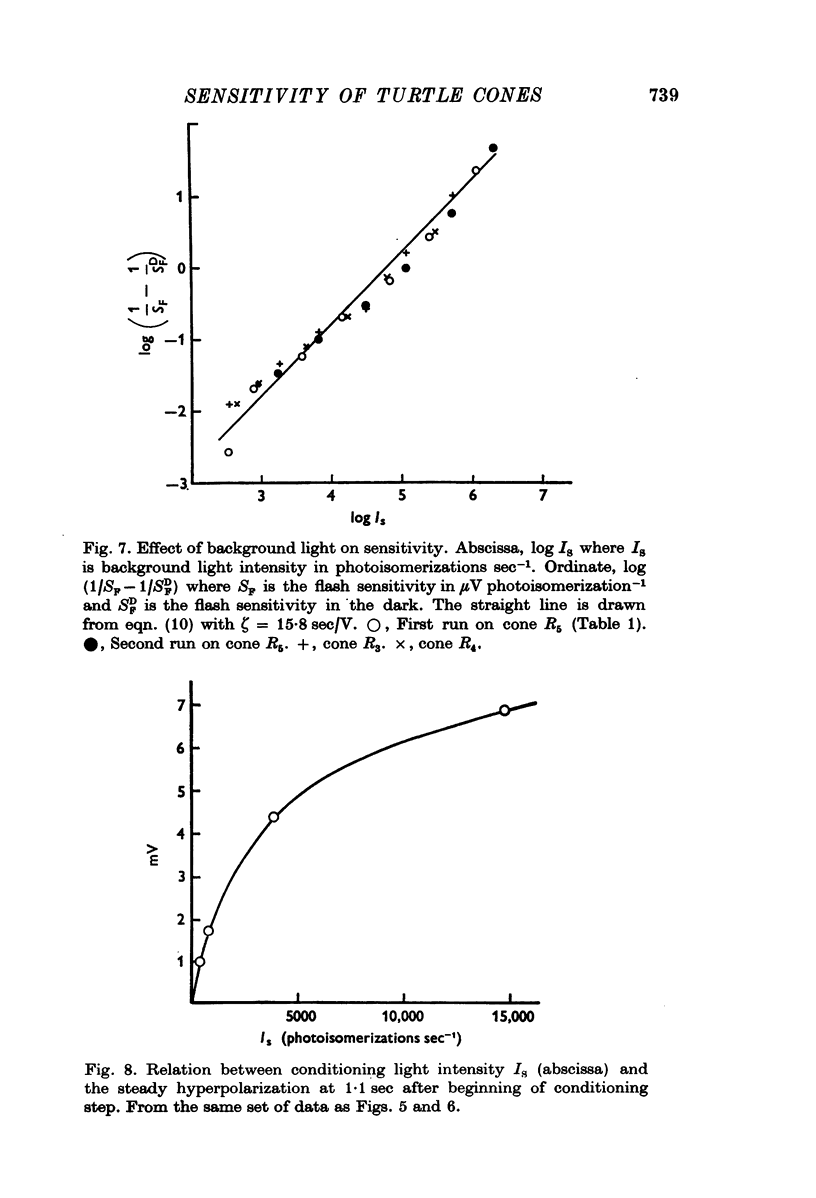
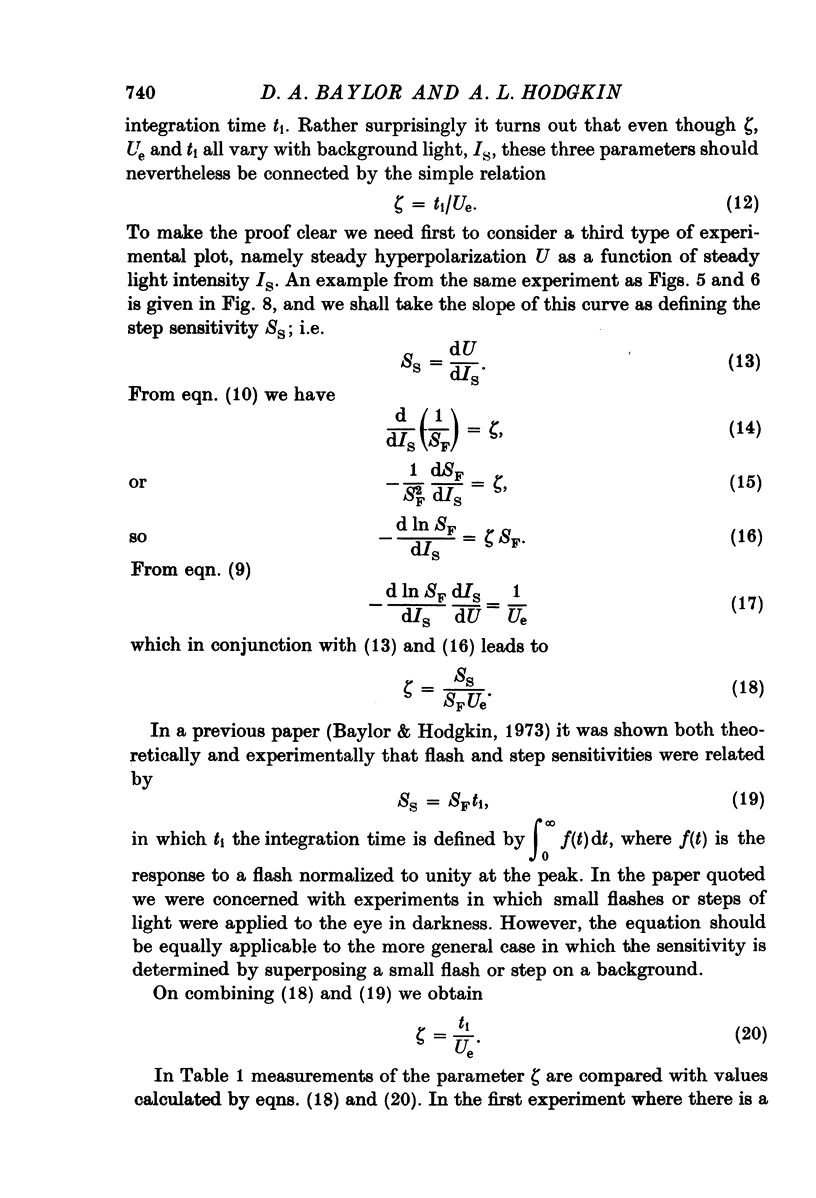
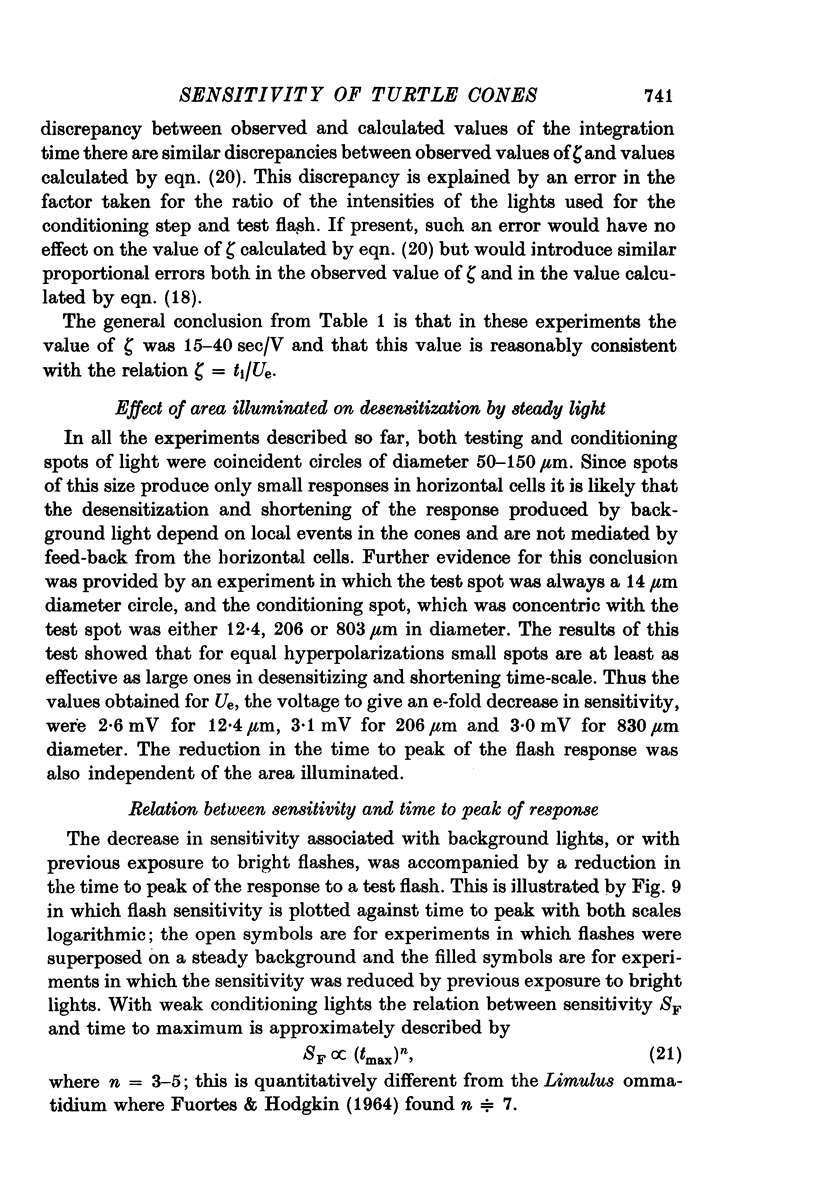
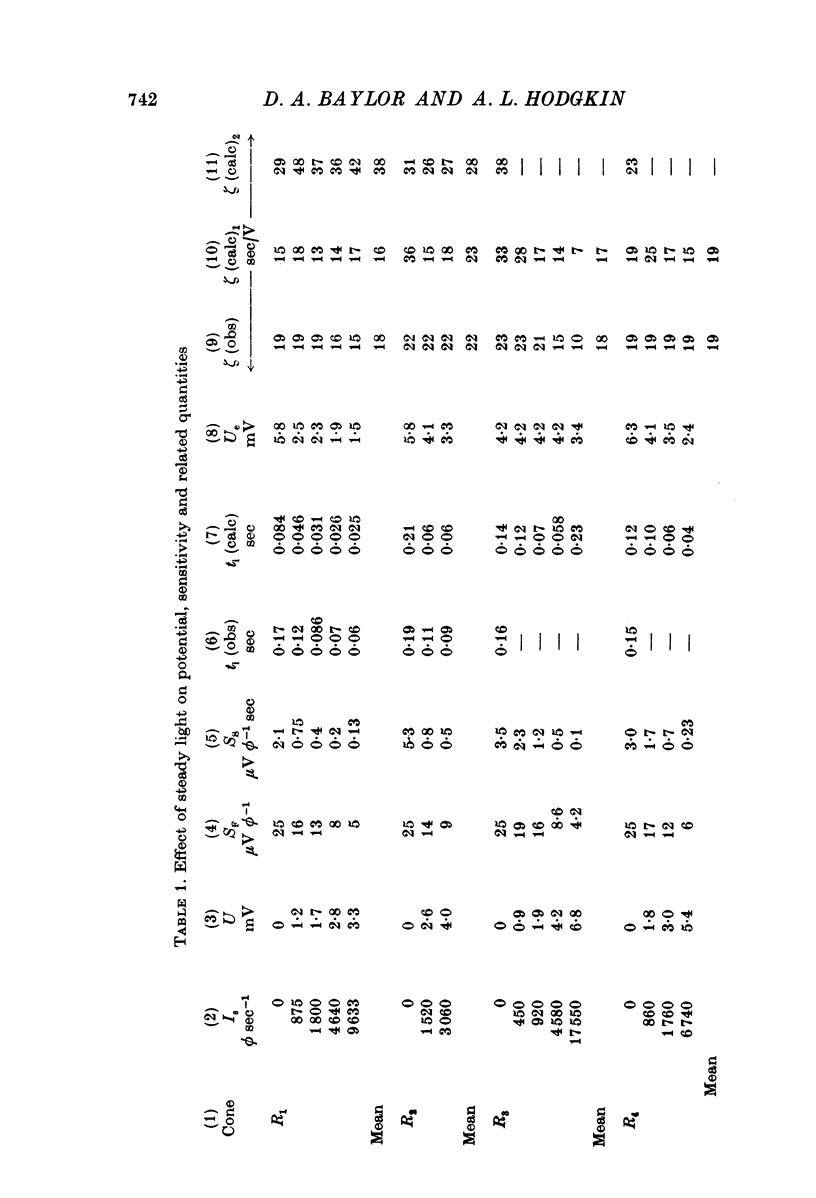
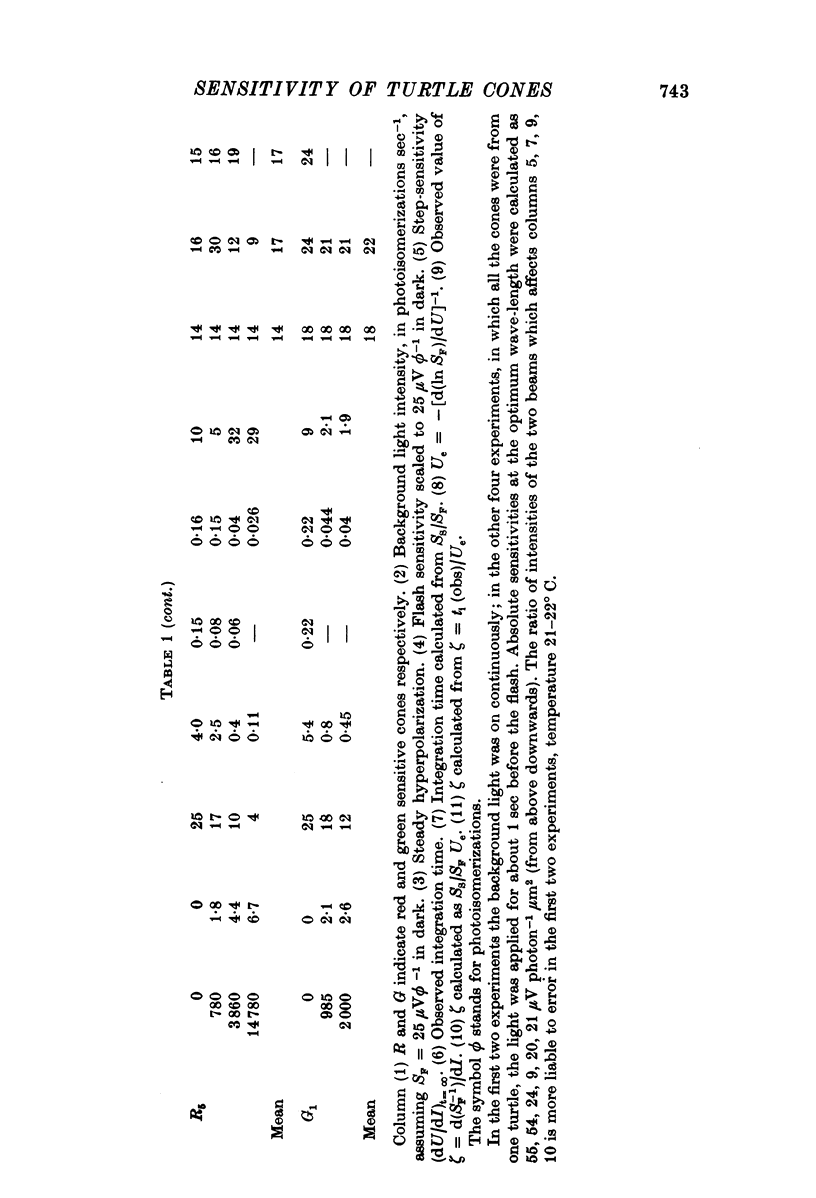
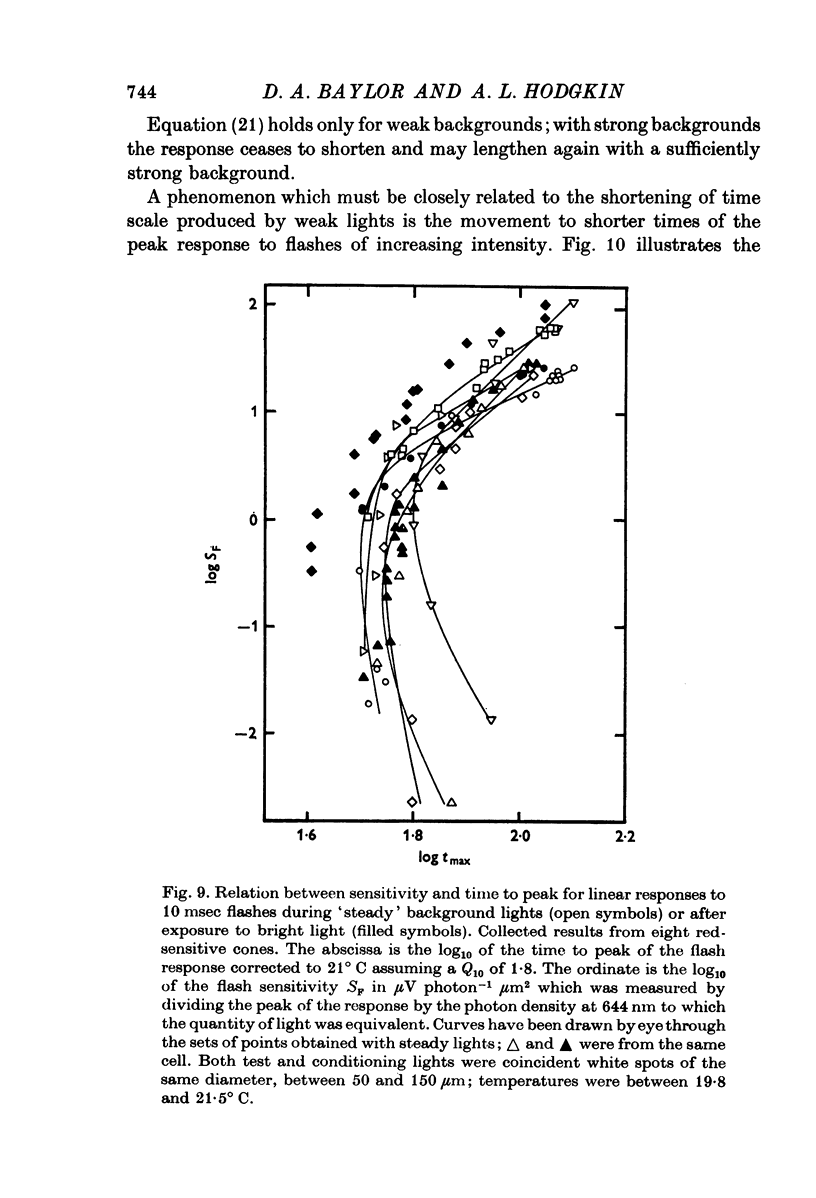
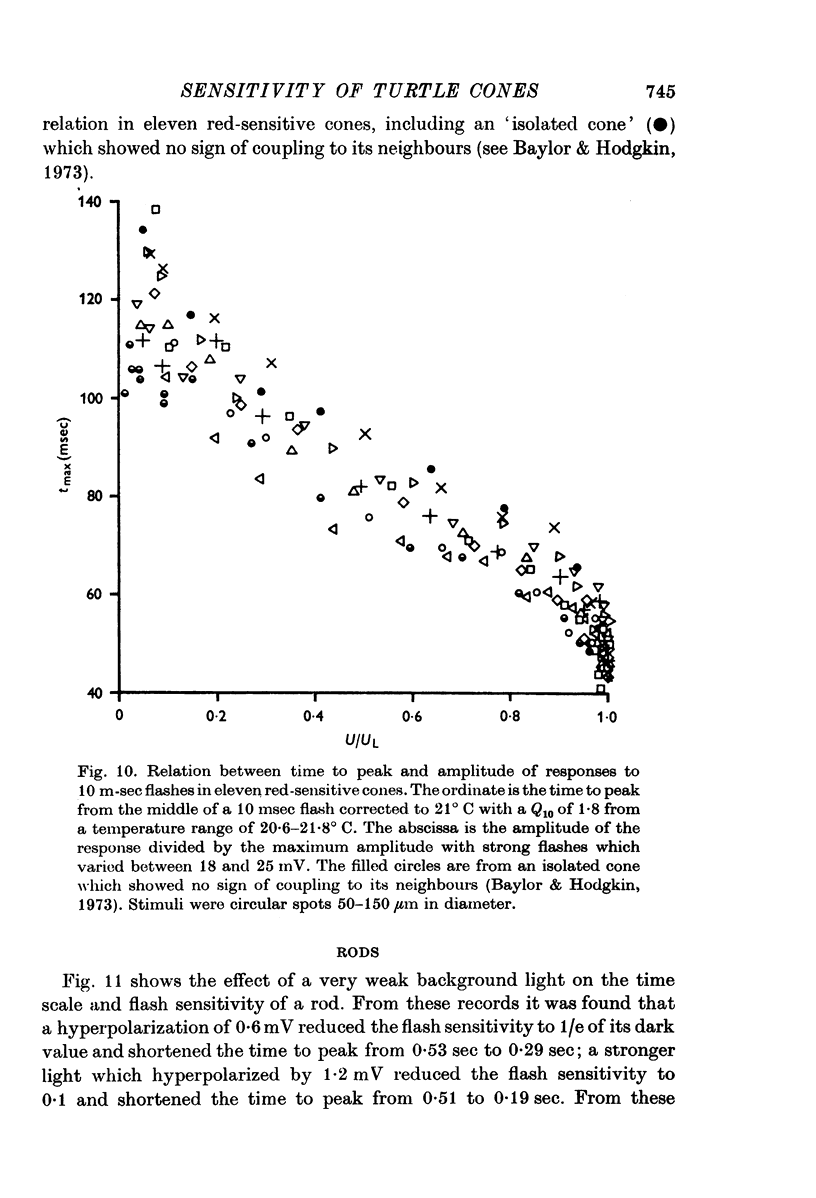
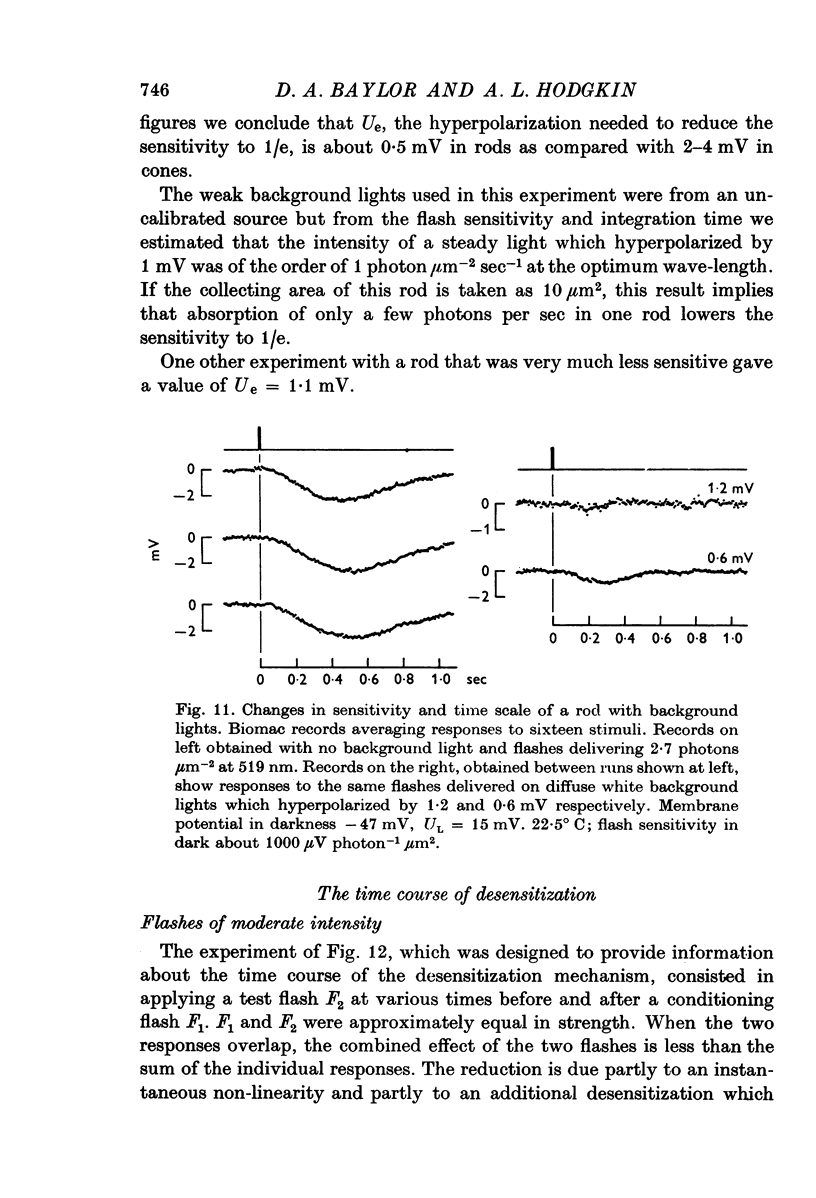
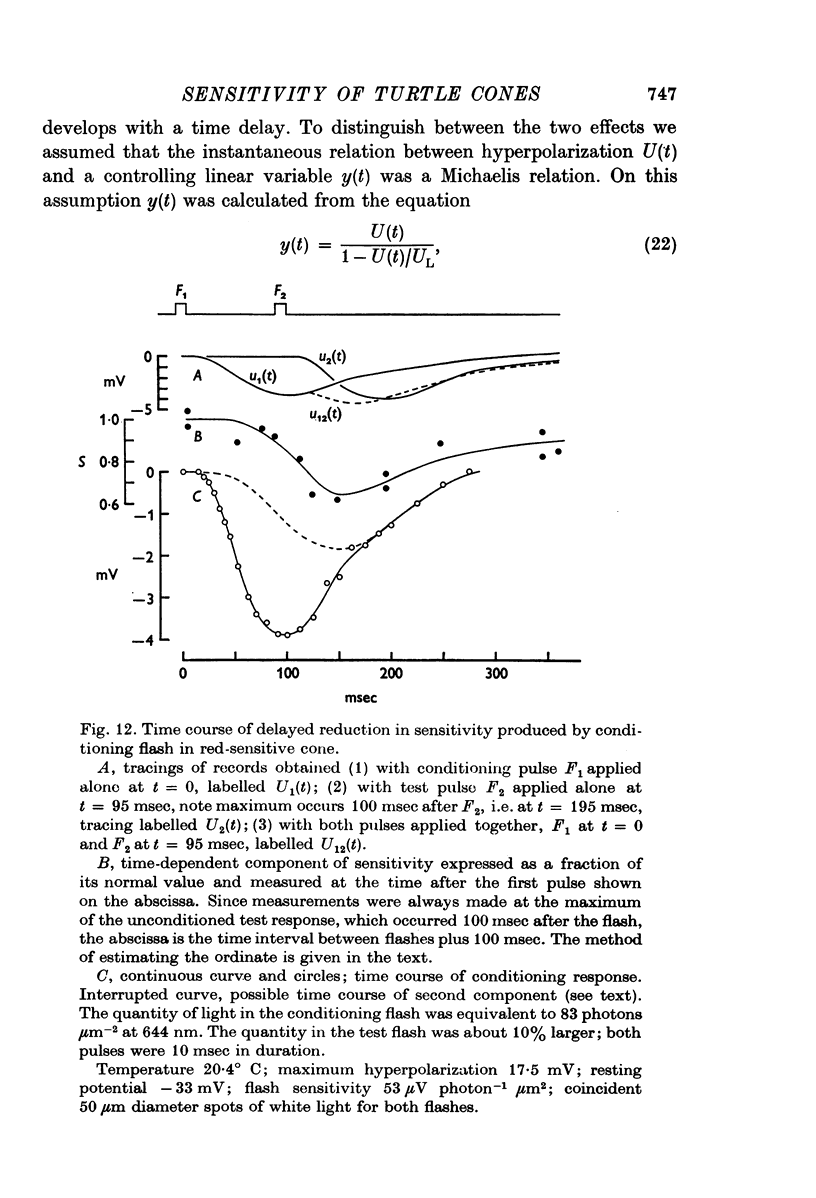
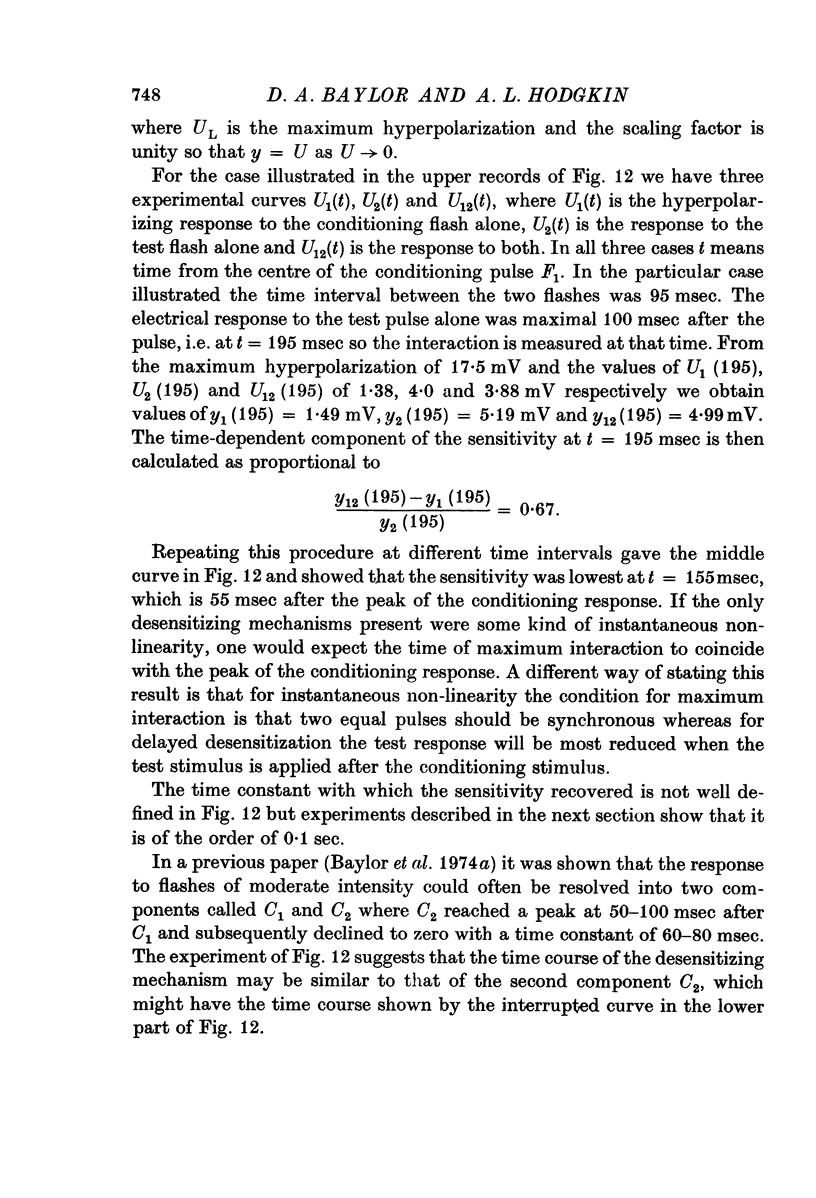
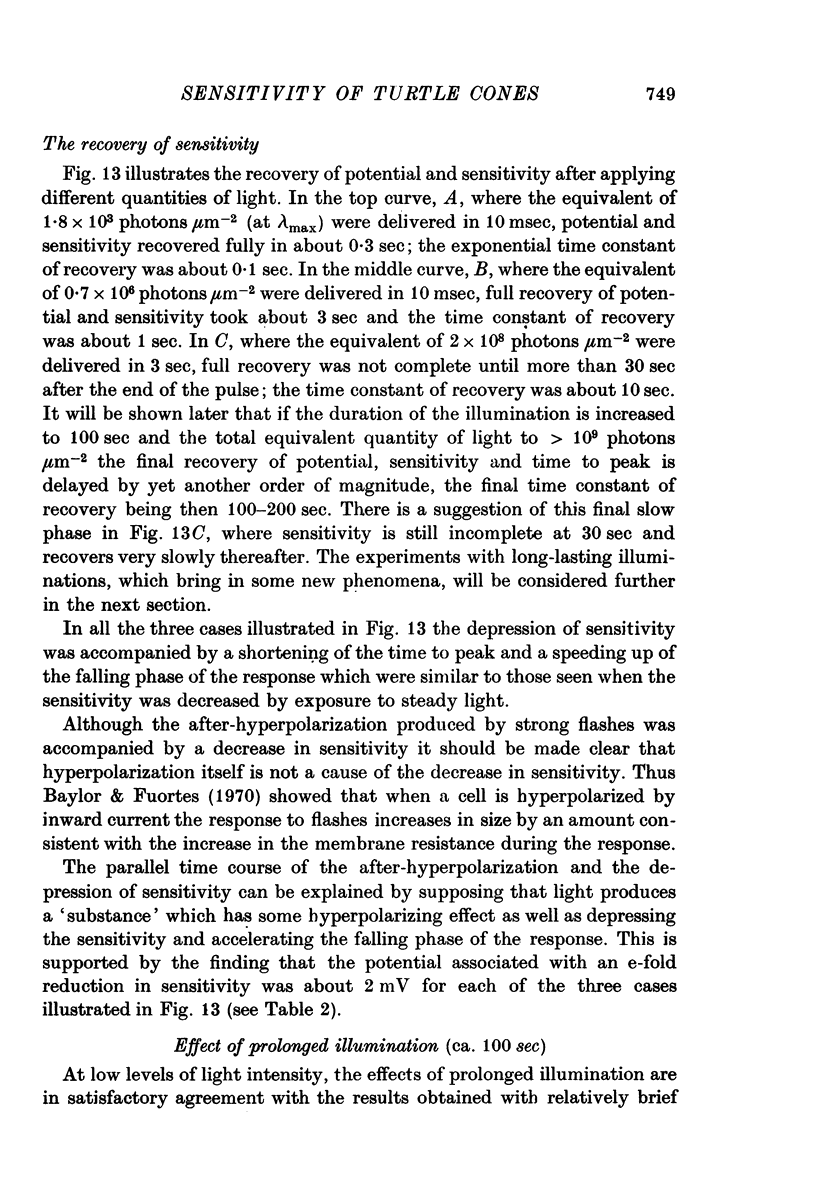
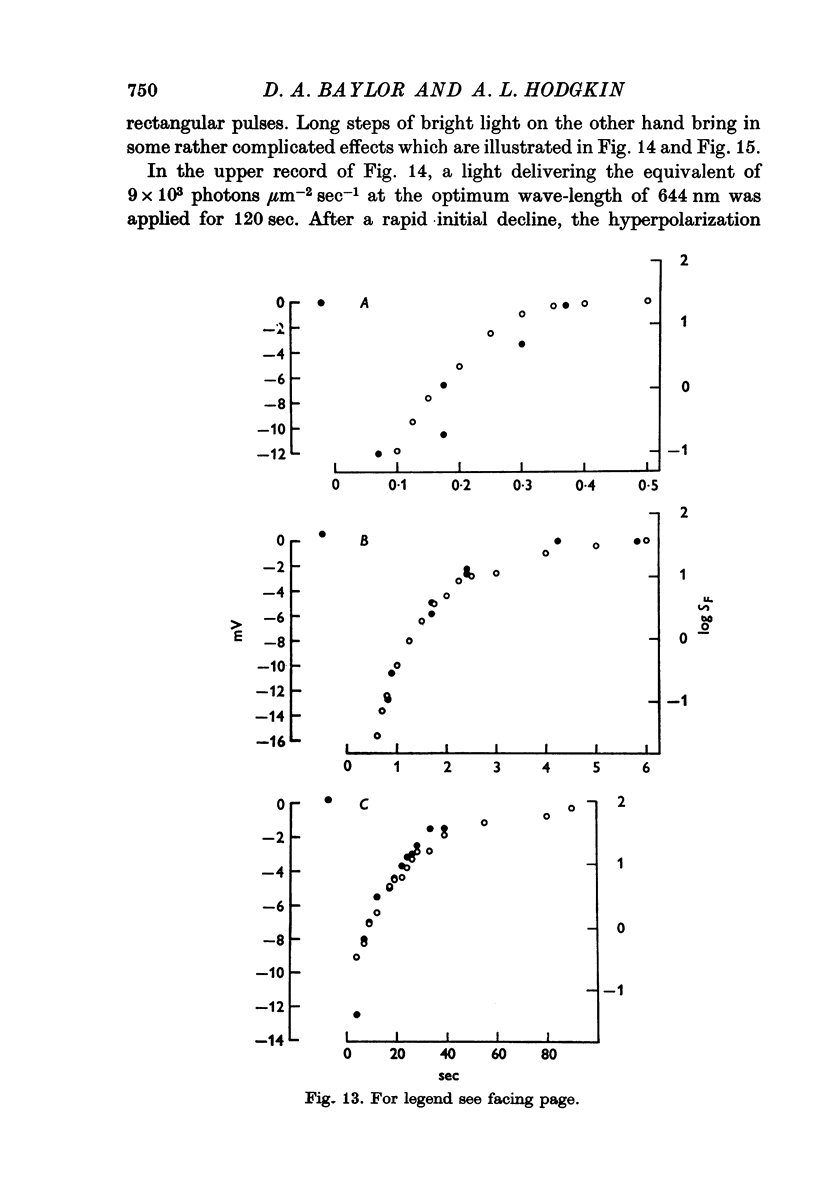
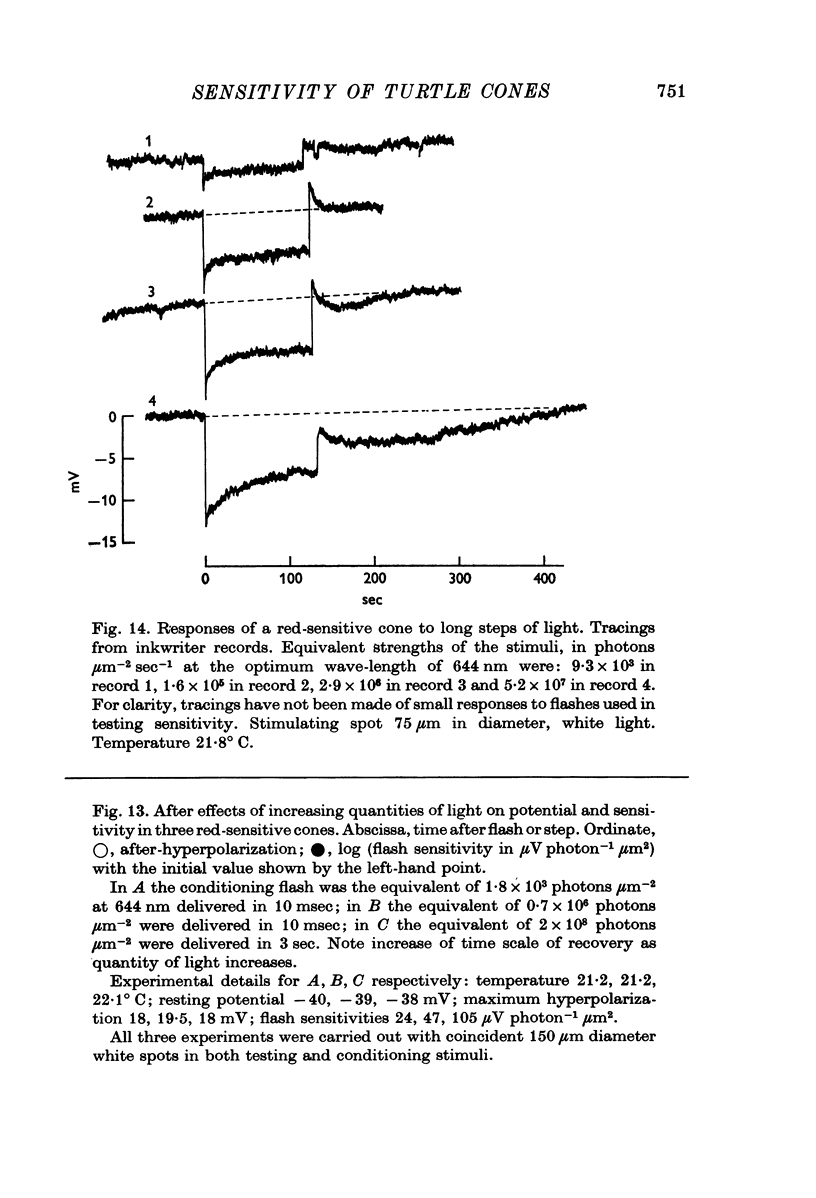
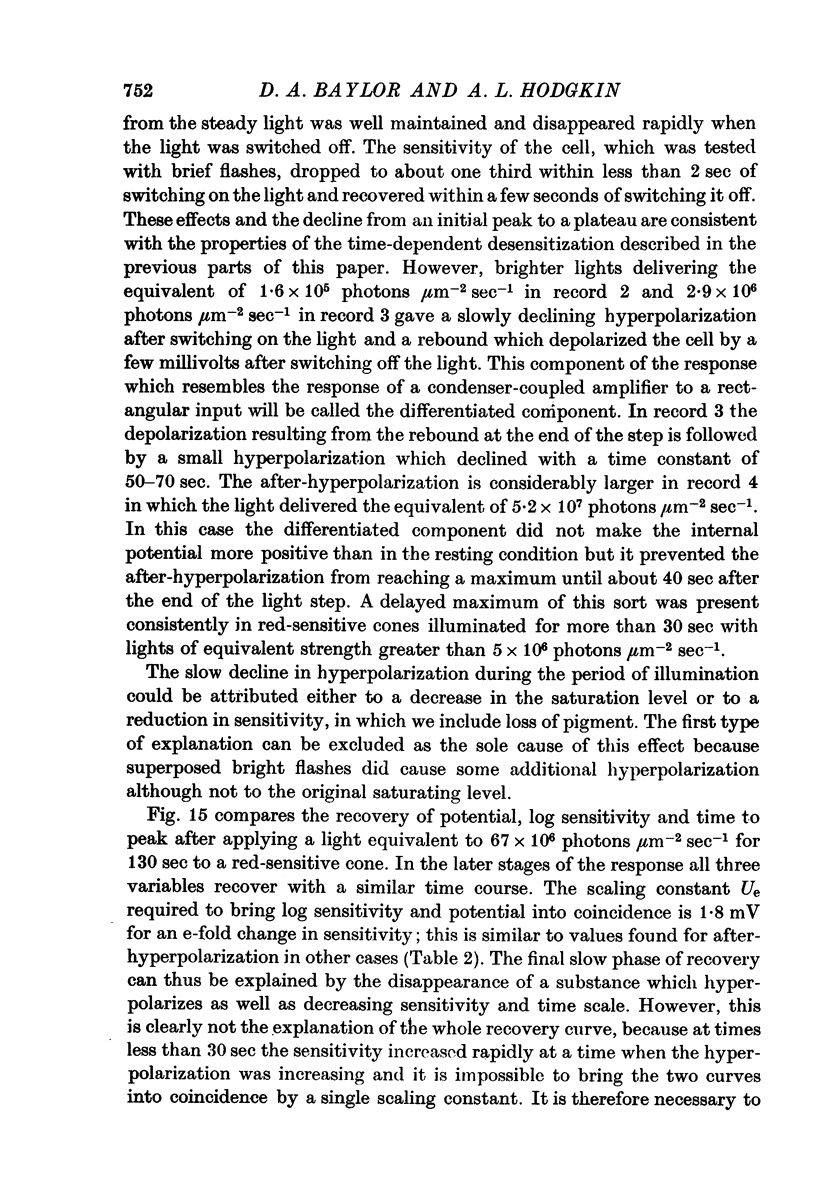
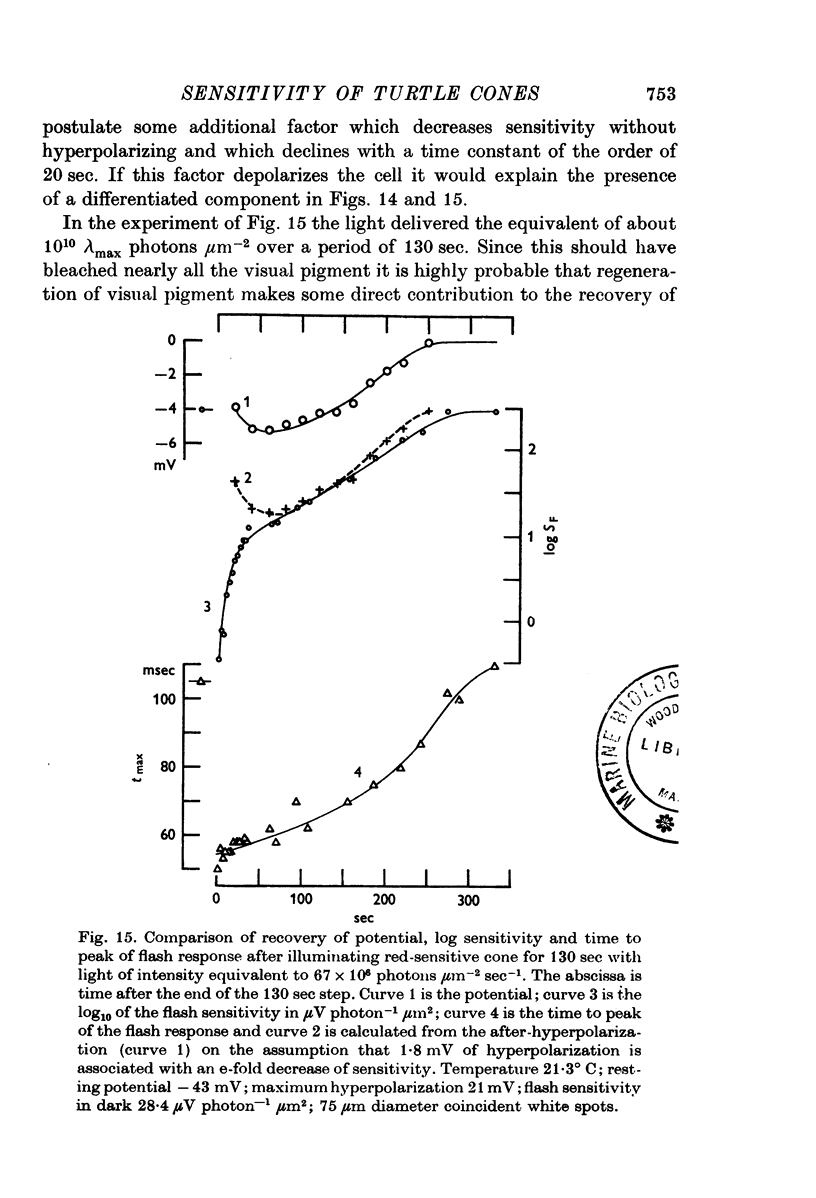
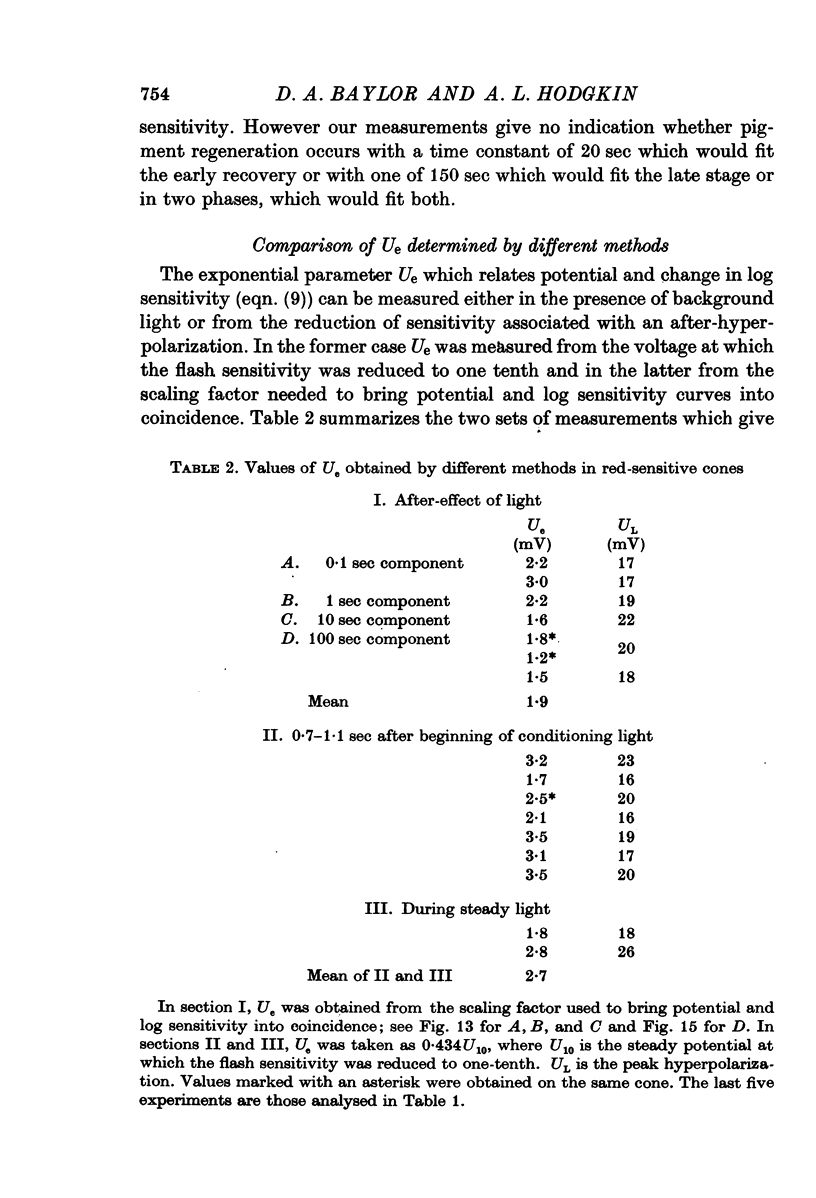
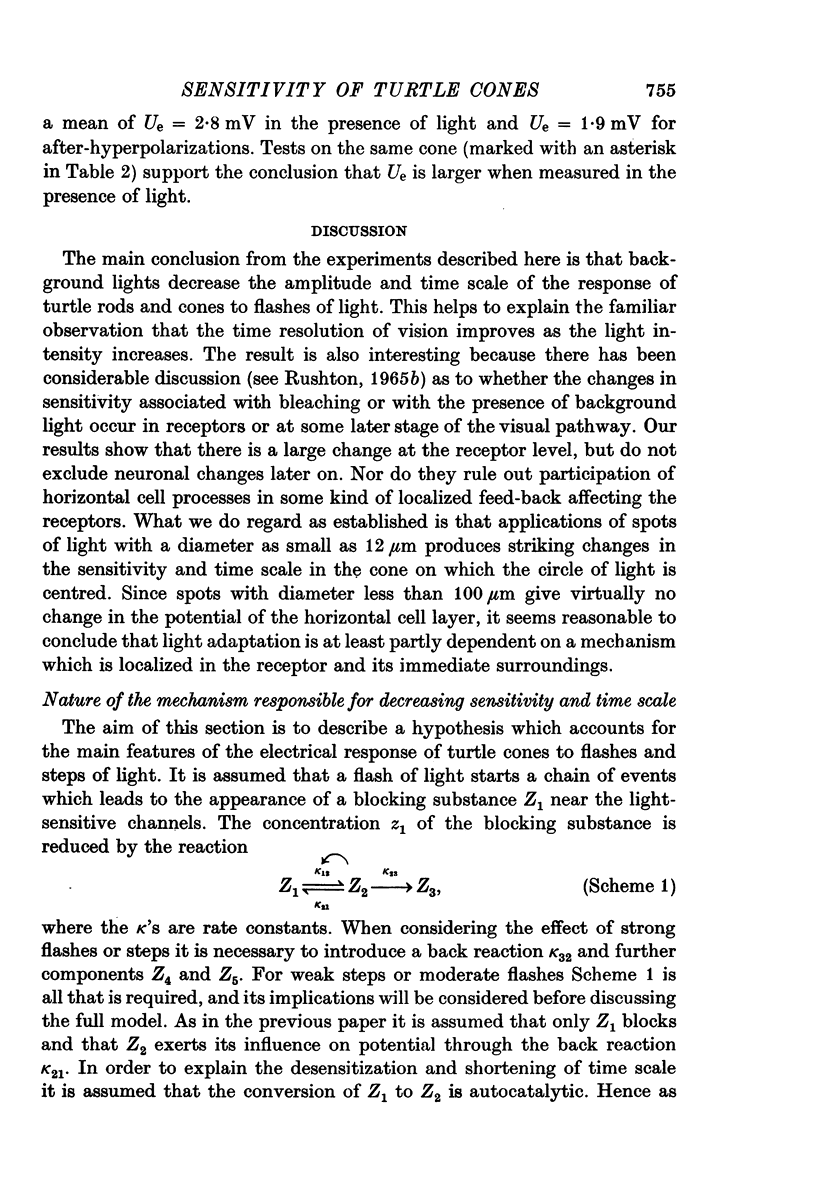
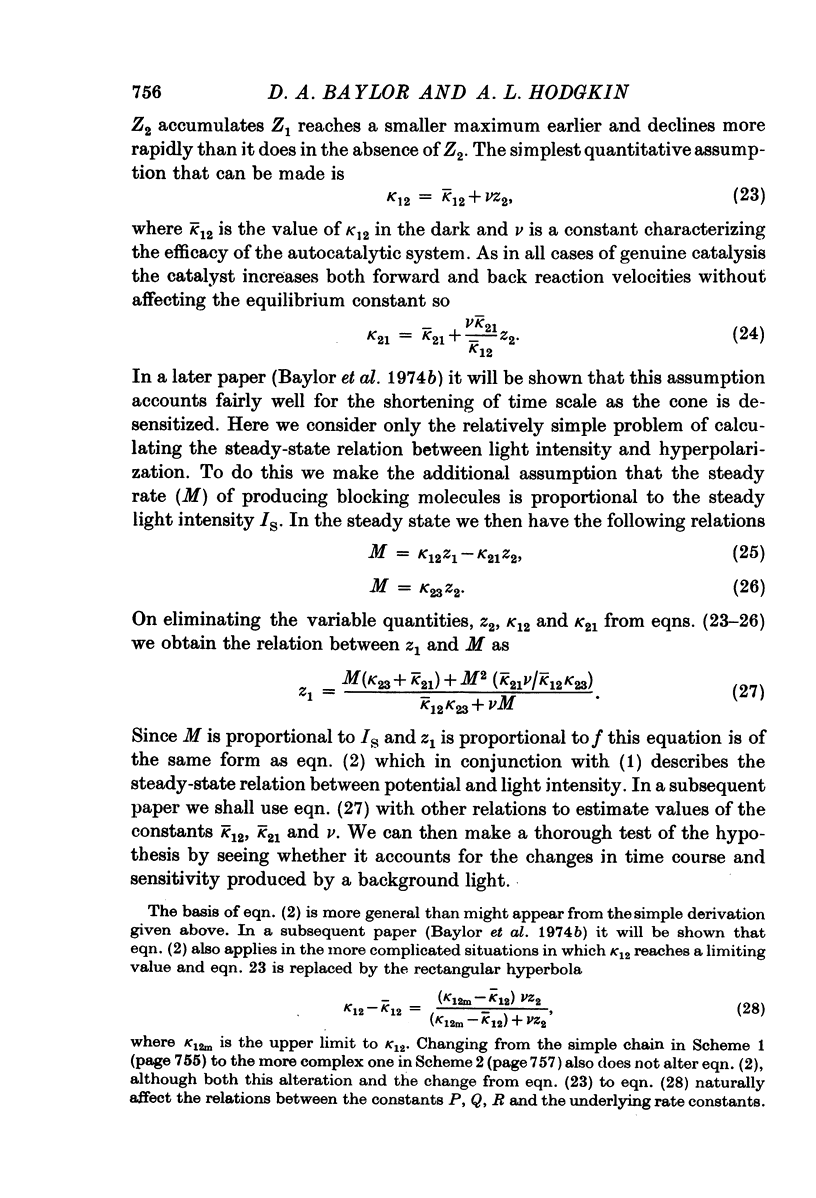
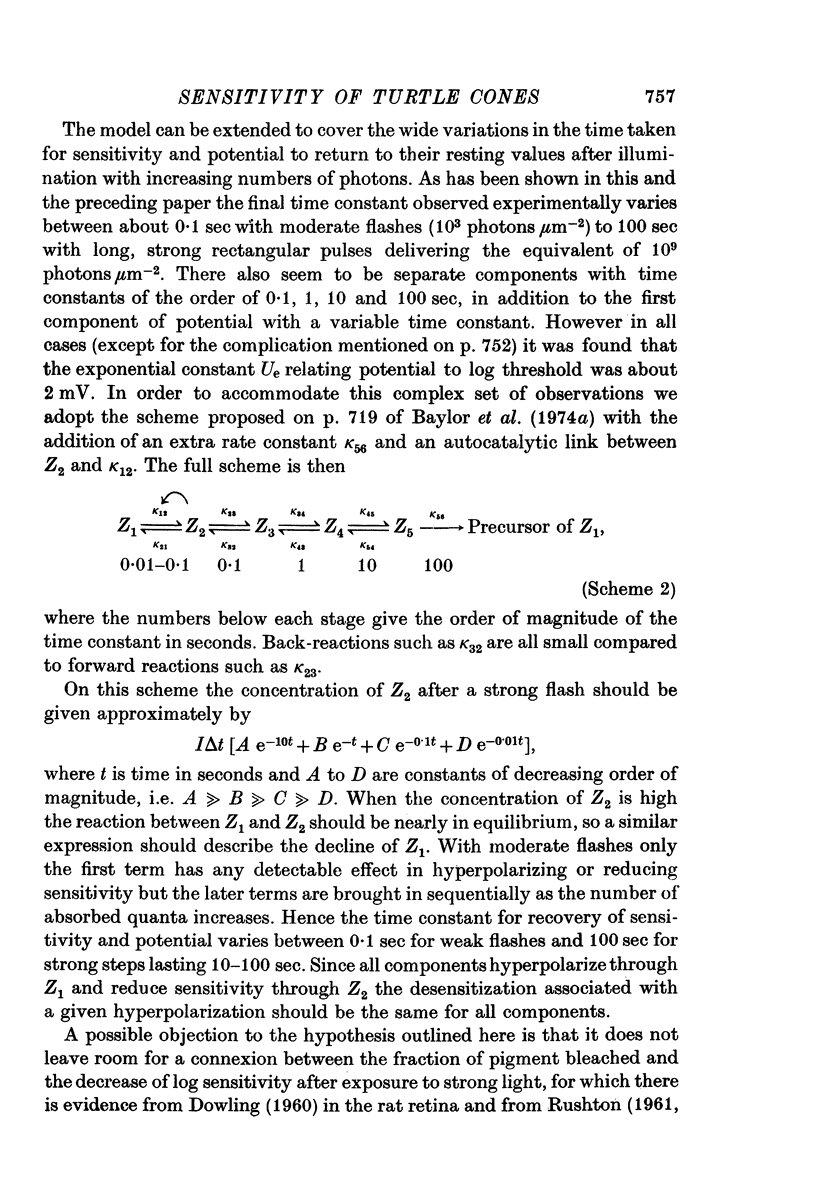
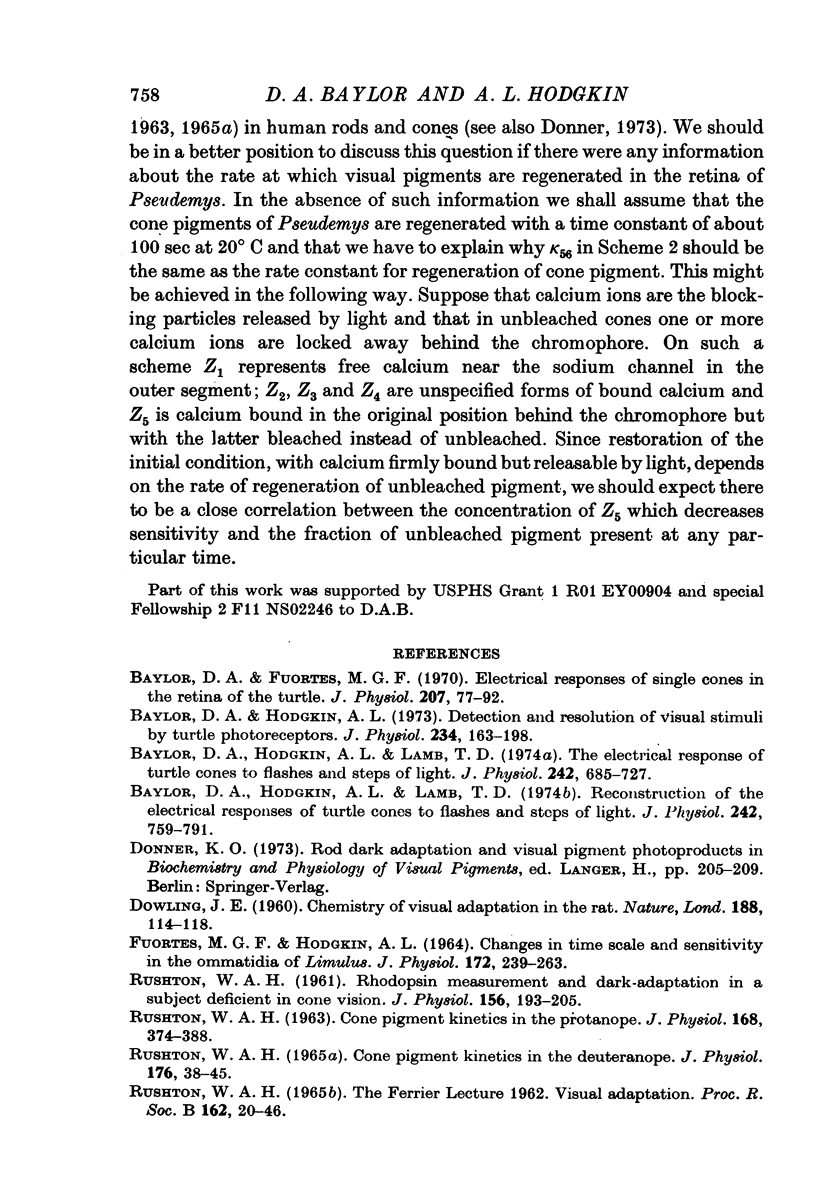
Selected References
These references are in PubMed. This may not be the complete list of references from this article.
- Baylor D. A., Fuortes M. G. Electrical responses of single cones in the retina of the turtle. J Physiol. 1970 Mar;207(1):77–92. doi: 10.1113/jphysiol.1970.sp009049. [DOI] [PMC free article] [PubMed] [Google Scholar]
- Baylor D. A., Hodgkin A. L. Detection and resolution of visual stimuli by turtle photoreceptors. J Physiol. 1973 Oct;234(1):163–198. doi: 10.1113/jphysiol.1973.sp010340. [DOI] [PMC free article] [PubMed] [Google Scholar]
- Baylor D. A., Hodgkin A. L., Lamb T. D. Reconstruction of the electrical responses of turtle cones to flashes and steps of light. J Physiol. 1974 Nov;242(3):759–791. doi: 10.1113/jphysiol.1974.sp010733. [DOI] [PMC free article] [PubMed] [Google Scholar]
- Baylor D. A., Hodgkin A. L., Lamb T. D. The electrical response of turtle cones to flashes and steps of light. J Physiol. 1974 Nov;242(3):685–727. doi: 10.1113/jphysiol.1974.sp010731. [DOI] [PMC free article] [PubMed] [Google Scholar]
- DOWLING J. E. Chemistry of visual adaptation in the rat. Nature. 1960 Oct 8;188:114–118. doi: 10.1038/188114a0. [DOI] [PubMed] [Google Scholar]
- FUORTES M. G., HODGKIN A. L. CHANGES IN TIME SCALE AND SENSITIVITY IN THE OMMATIDIA OF LIMULUS. J Physiol. 1964 Aug;172:239–263. doi: 10.1113/jphysiol.1964.sp007415. [DOI] [PMC free article] [PubMed] [Google Scholar]
- RUSHTON W. A. CONE PIGMENT KINETICS IN THE DEUTERANOPE. J Physiol. 1965 Jan;176:38–45. doi: 10.1113/jphysiol.1965.sp007533. [DOI] [PMC free article] [PubMed] [Google Scholar]
- RUSHTON W. A. CONE PIGMENT KINETICS IN THE PROTANOPE. J Physiol. 1963 Sep;168:374–388. doi: 10.1113/jphysiol.1963.sp007198. [DOI] [PMC free article] [PubMed] [Google Scholar]
- RUSHTON W. A. Rhodopsin measurement and dark-adaptation in a subject deficient in cone vision. J Physiol. 1961 Apr;156:193–205. doi: 10.1113/jphysiol.1961.sp006668. [DOI] [PMC free article] [PubMed] [Google Scholar]
- RUSHTON W. A. VISUAL ADAPTATION. Proc R Soc Lond B Biol Sci. 1965 Mar 16;162:20–46. doi: 10.1098/rspb.1965.0024. [DOI] [PubMed] [Google Scholar]


